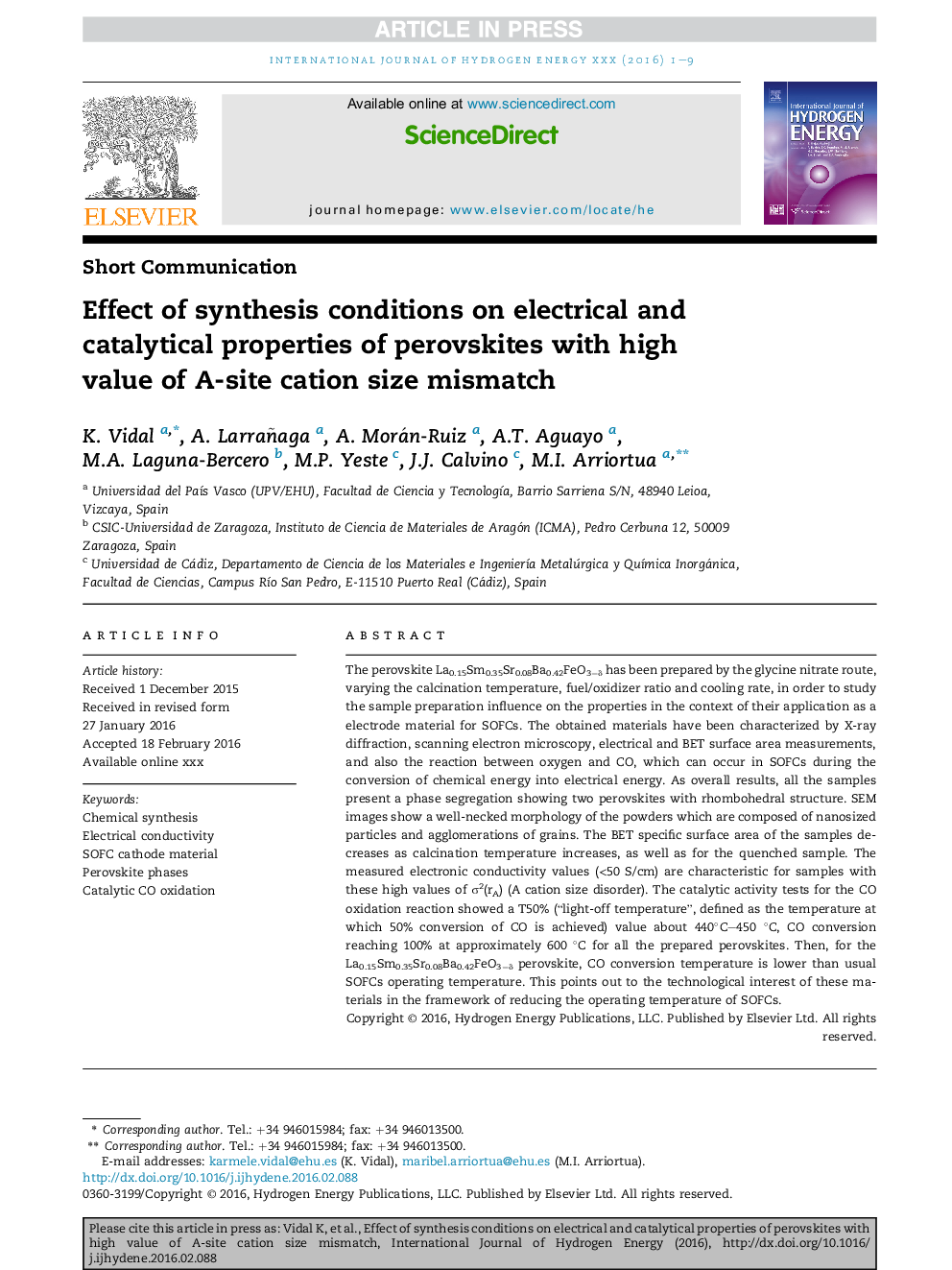| Article ID | Journal | Published Year | Pages | File Type |
|---|---|---|---|---|
| 5147478 | International Journal of Hydrogen Energy | 2016 | 9 Pages |
Abstract
The perovskite La0.15Sm0.35Sr0.08Ba0.42FeO3âδ has been prepared by the glycine nitrate route, varying the calcination temperature, fuel/oxidizer ratio and cooling rate, in order to study the sample preparation influence on the properties in the context of their application as a electrode material for SOFCs. The obtained materials have been characterized by X-ray diffraction, scanning electron microscopy, electrical and BET surface area measurements, and also the reaction between oxygen and CO, which can occur in SOFCs during the conversion of chemical energy into electrical energy. As overall results, all the samples present a phase segregation showing two perovskites with rhombohedral structure. SEM images show a well-necked morphology of the powders which are composed of nanosized particles and agglomerations of grains. The BET specific surface area of the samples decreases as calcination temperature increases, as well as for the quenched sample. The measured electronic conductivity values (<50 S/cm) are characteristic for samples with these high values of Ï2(rA) (A cation size disorder). The catalytic activity tests for the CO oxidation reaction showed a T50% (“light-off temperature”, defined as the temperature at which 50% conversion of CO is achieved) value about 440°C-450 °C, CO conversion reaching 100% at approximately 600 °C for all the prepared perovskites. Then, for the La0.15Sm0.35Sr0.08Ba0.42FeO3âδ perovskite, CO conversion temperature is lower than usual SOFCs operating temperature. This points out to the technological interest of these materials in the framework of reducing the operating temperature of SOFCs.
Related Topics
Physical Sciences and Engineering
Chemistry
Electrochemistry
Authors
K. Vidal, A. Larrañaga, A. Morán-Ruiz, A.T. Aguayo, M.A. Laguna-Bercero, M.P. Yeste, J.J. Calvino, M.I. Arriortua,
